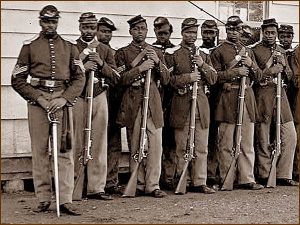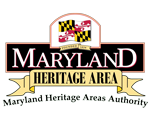George Washington Barnes
Enslaved Sotterley runaway fought for freedom.

George Washington Barnes was enslaved by Dr. Walter Stone Hanson Briscoe of the Sotterley Plantation in St. Mary’s County. In 1863, George fled Sotterley to join the Union Army which had begun to accept enlisted Black men into the war effort. In September of 1863, the War Department gave Colonel Birney of the 7th Regiment the authority to raise one regiment of “men of color” in Maryland. George served with company J of the 7th Regiment United States Colored Troops (USCT) which later became part of Major Birney’s 10th Army Brigade.
When the 7th Regiment was ordered to Florida, Colonel Morgan, Inspector General remarked “it [the 7th Regiment] was the best regiment in the service.” Additionally, the USCT were quoted as an “example of unflagging energy and steady perseverance.”
There is also the possibility that George W. Barnes faced Dr. Henry Briscoe, son of Dr. Walter Stone Hanson Briscoe, at the Battle of Petersburg as Henry had fled Maryland to join the Confederacy and was stationed in Petersburg at the same time as George Barnes. The USCT were integral in the Union victory at the Battle of Petersburg in Virginia, effectively cutting off a major supply center of the Confederacy.
In May of 1865, the 7th Regiment was sent to serve eighteen months in Texas. George W. Barnes’ Company J was sent to Indianola, Texas. While in Indianola, cholera spread and killed several of those who had served valiantly in the Civil War, including George. At age 26, George Washington Barnes exemplified agency in flight and resistance, playing a central role in Union Army’s success.
Additional Resources
A Guide to the History of Slavery in Southern Maryland from the Maryland State Archives
https://www.baldwinbriscoe.com/the-john-hanson-briscoe-historical-project/
Visit Historic Sotterley
